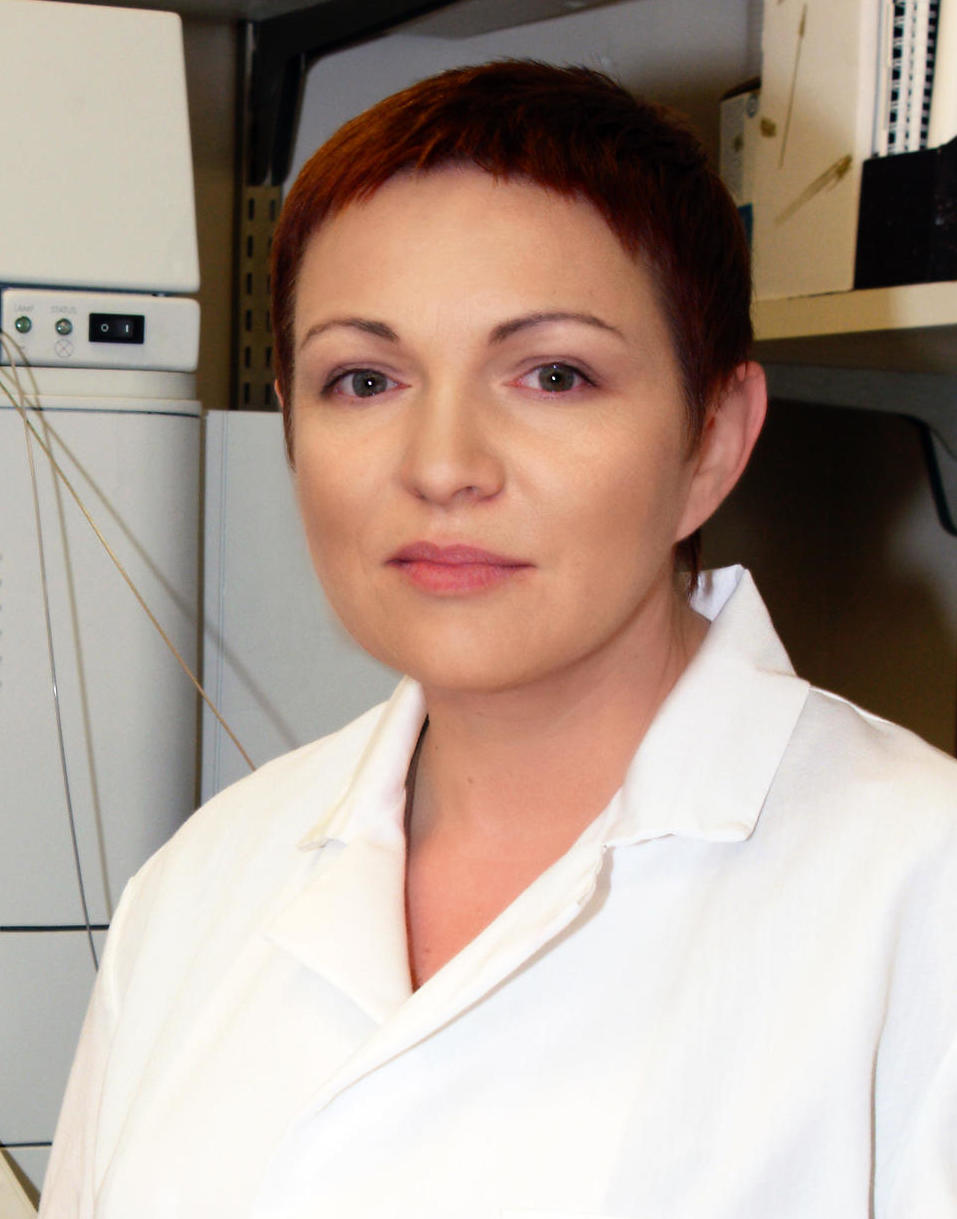Covalent Inhibitors of RAS
, by Anna Maciag
Anna Maciag leads the Covalent Inhibitors group in the NCI RAS Initiative. She earned her Ph.D. at the Nicolaus Copernicus University in Toruń, Poland, and received trainings at Lund University in Sweden, then at the NCI in Frederick, MD, USA. Her team includes expertise in medicinal chemistry, computational chemistry, mass spectrometry, biochemistry, and cell biology.
RAS is the worst cancer gene, causing more than 100,000 deaths in the US each year when it is mutated in pancreas, lung, colon, and other cancers. The RAS protein binds GTP and GDP with picomolar affinities and signals through its effectors when it is in the GTP-bound form. Because human cells contain both GTP and GDP at concentrations a million times higher than these affinities, attacking RAS with nucleotide analogues has been judged unworkable. Indeed, the lack of other obvious pockets on the surface of RAS, and the failure of intensive drug screening efforts, led to RAS being considered “undruggable”.
A particular type of lung cancer, and a drug screening tool from almost two decades ago, have come together to give us new opportunities for directly inhibiting RAS proteins. The lung cancer is driven by the G12C mutant of KRAS, caused by smoking and accounting for 15% of all non-small cell lung adenocarcinoma (Hansen, 2018). The tool is called a tethering screen, first described by Erlanson, Wells, and colleagues (Wells, 2000). Not coincidentally the tethering screen relies on the presence of a reactive cysteine (such as the G12C mutant of KRAS) in the target protein of interest, and the Shokat group put the tool and the lung cancer G12C mutation together in their paper from 2013 (Ostrem, 2013).
The method developed by Wells, et al. screened a library of drug-like molecules that had been modified to contain a disulfide group. Each screening reaction comprised a competition between a member of the library and an equimolar concentration of β-mercaptoethanol for tethering to a reactive cysteine on the target protein. Binders were identified by their ability to out-compete the βME, using mass spectrometry as the readout. Then these binders were optimized by standard medicinal chemistry techniques and co-crystallized with their protein target to guide further optimization. Finally, various reactive “warheads” were tested for their ability to replace the disulfide group and covalently bind to and inhibit the target’s activity, in vitro and in cells.
Since Shokat, et al. were focused on the G12C mutant of KRAS, they tested a variety of cysteine-targeting warheads and showed that their best compound was selectively toxic for G12C lung cancer cell lines. This breakthrough has been widely recognized: molecules targeting mutant KRAS directly are extremely useful benchmarks for all kinds of experiments, and the Shokat 2013 paper has been cited almost 300 times. Small companies and big pharma are actively pursuing their own versions of G12C drugs, and the early results from human trials are promising. However, the magnitude of the KRAS problem is illustrated by the fact that fully 88% of the mutated KRAS molecules found in human cancers are not G12C (COSMIC v89).
Inspired by the success of Shokat, et al., we are pursuing two other avenues of attack on KRAS molecules via tethering screens. A project to target the cysteine 185 of KRAS 4b was begun at UCSF by Frank McCormick’s group, and their initial hits are being further developed here in the RAS Initiative. An early KRAS binder called FB9 contained a highly reactive electrophilic warhead, tetrafluorophenoxyketone, in place of the disulfide chemistry, and as expected FB9 covalently modified cysteine 185. However, here in the RAS Initiative we found that it also modified histidine 95 of KRAS, which was a surprise. Modifying C185 of KRAS 4b would certainly inactivate it, since that modification would prevent the farnesylation reaction and subsequent posttranslational processing that is required to send KRAS to the plasma membrane. We have confirmed this in Barbacid’s mouse embryonic fibroblasts (MEFs), where our more evolved C185 molecules selectively inhibit MEFs dependent on KRAS 4b compared to HRAS MEFs.
In parallel we are also pursuing the H95 target, which is unique to KRAS and not found in HRAS or NRAS. The chemical reactivity of histidine is much lower than cysteine, presenting a challenge for a covalent attack, but it has the advantage that it is always available in every KRAS protein molecule, whereas the C185 is only briefly accessible for covalent modification, between the moment KRAS finishes translation and release from the ribosome and its farnesylation in the cytoplasm (Philips, 2011).
We have developed a suite of resources to drive, inform, and validate our medicinal chemistry efforts. The RASless MEFs dependent on KRAS 4b or HRAS are not cancer lines, but they are exquisitely specific tools for assessing on-target effects. Our internal crystallography, NMR, biochemistry, biophysics, structural biology, and protein expression and purification capabilities have been invaluable. The RAS Initiative’s collaboration with the Lawrence Livermore National Lab has given us confidence in our understanding of how our compounds are binding KRAS.
Though RAS is still a formidable opponent, it is satisfying exciting to be discovering its vulnerabilities.
